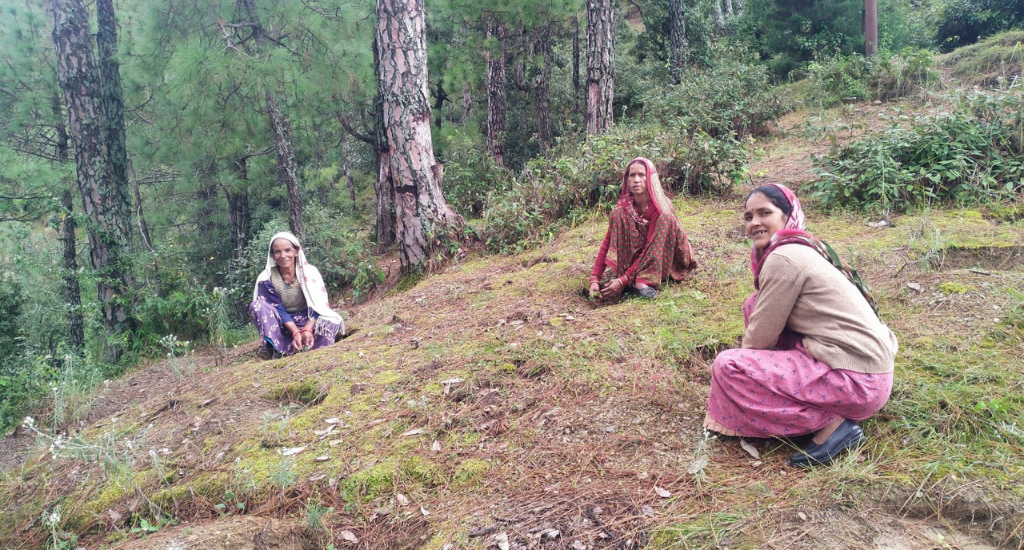
Nainital villagers use local oak to contain wildfires
Sustained efforts to plant native Himalayan oak trees bear fruit in Nainital district of Uttarakhand, which was once besieged by invasive pines that cause wildfires and climate change.

Sustained efforts to plant native Himalayan oak trees bear fruit in Nainital district of Uttarakhand, which was once besieged by invasive pines that cause wildfires and climate change.
Wildfires fuelled by the wax-coated needles of the invasive pine trees are a recurring tale during the pre-monsoon dry months in the Himalayan state of Uttarakhand. Like “little fires everywhere”, they repeat so often that they are seldom considered newsworthy.
These never make national headlines unlike, for instance, the 2016 forest fires in the state when civilian and military personnel joined forces to create firebreaks and hovering helicopters dunked smouldering trees. So, what makes wildfires a burning issue? It’s the sheer volume of cases. The Uttarakhand forest department reported 647 wildfires between November 2022 and June 2023.
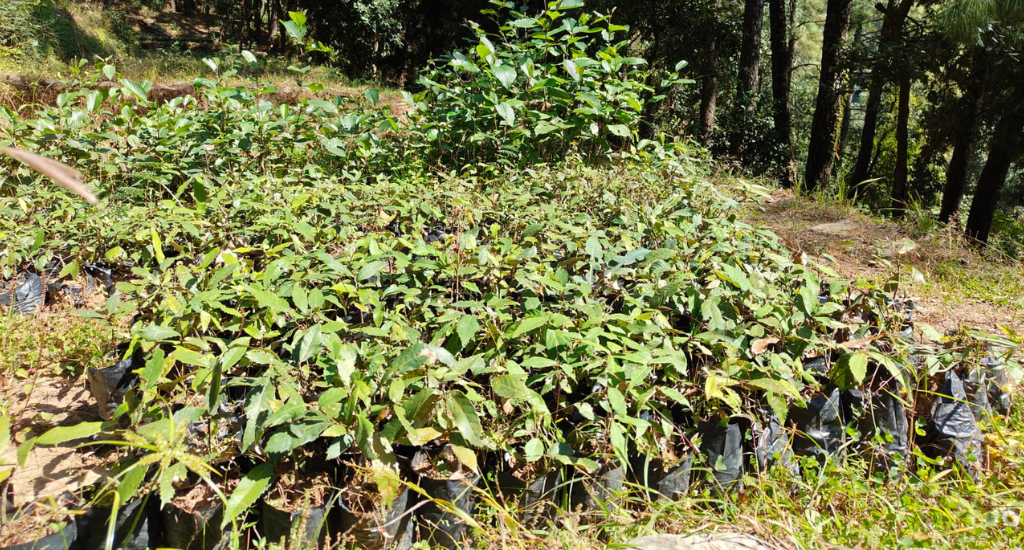
Whipped up by strong winds and assisted by the season’s dry heat, a fire could spread from a small area to take the form of a wildfire. Just two decades ago, forest fires painted the picturesque valleys and hillsides of 130 villages in Nainital district in a desolate hue of black, brown and grey. White and brown smoke rose from green forests. A thick haze enveloped the entire Ramgarh block as the fires devoured hundreds of acres of forestland.
The consequences were profound, as recounted by Ramesh Kumar, the forest sarpanch for three villages: “Our jungles had become havan samagri (material for the holy fire ritual). One small spark and the whole place had the potential to become an agni kund (fire pit).”
The smoke and heat from the wildfires brought one of the more visceral effects of climate change home to places that once seemed immune. “About 25 years ago, we weren’t able to push open the doors in the morning after a bout of nightly snowfall. That much snow piled up outside,” said Dhan Singh Dangwal of Meora village, a farmer who doubles up as a stone mason. But now, only a light carpet of snow falls.
The hills that were once famous for delicious apples witnessed a decline in orchards, and rising temperatures exacerbated by forest fires prompted a phase of realisation.
Also Read: Ills of eucalyptus drive Odisha tribals back to legacy crops
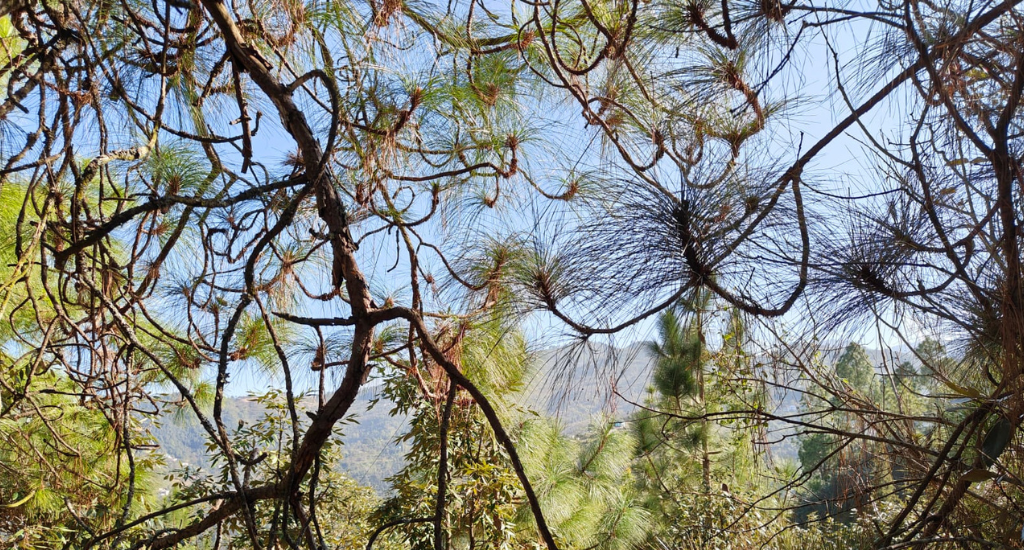
Dinesh Bisht, a farmer from Nathuakhan village, vividly recalled the transformation: “Until the 1980s, this valley was famous for its apples. However, over the years, they experienced stunted growth, and everyone slowly shifted to cultivating peaches and plums.”
Forest fires, triggered by rocks colliding, friction among pine needles, and carelessly discarded bidi and cigarette butts, became a recurring nightmare. As an apocalyptic disaster knocked on their doors, the villagers forged a path towards recovery. The scorched hills in Nainital district found a healing touch. The protagonist of this green revolution: the banj oak.
This native tree species is weaving a tale of redemption for the landscape that suffered under the dominance of the coniferous pine — Pinus roxburghii, locally called cheed. The shift is not merely botanical but a lifeline for the hills, breathing new life into the burnt slopes.
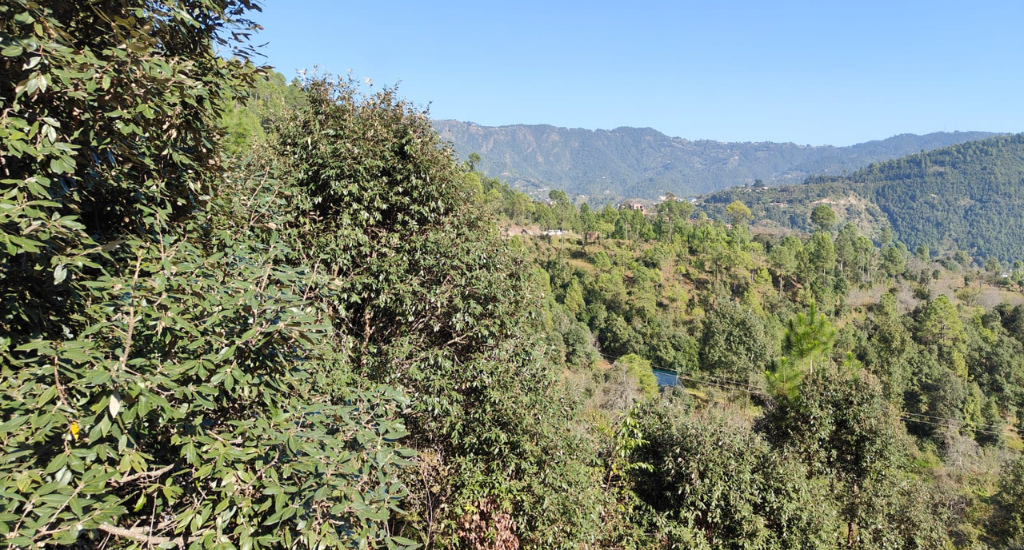
Pine, introduced by the British as a commercial crop in the early 1900s, proved detrimental to the ecosystem. Its needles, coated with inflammable wax, created unsuitable ground for other growth, causing dry, degraded land. The resin oozing out of its bark is highly flammable too.
“Bidi smoking is common here. It has always been so,” said Bisht, recalling how he grew up seeing elderly men casually toss burning stubs in the woods. “But nothing untoward happened then,” he said, explaining that the soil used to be covered by a wet and thick layer of humus and peat made of leaves, bark and fruits of banj oak and other local trees like padam (Prunus cerasoides). A lit bidi was no match for the wet forest floor.
“It was a shock to all of us when the first forest fire happened near Talla Ramgarh in the early 1990s,” Bisht said.
Also Read: Earth Overshoot Day: A call for sustained conservation efforts
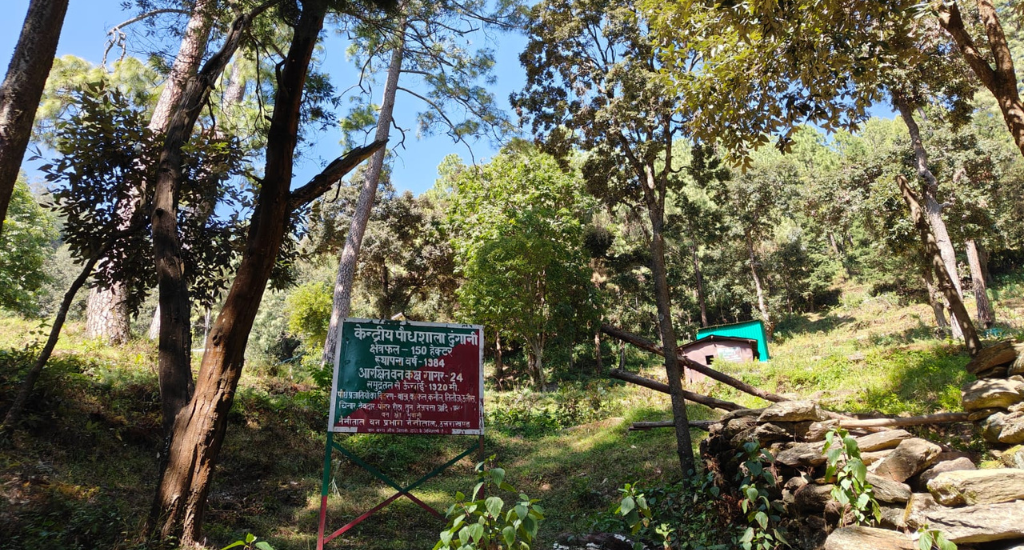
The banj oak emerged as the beacon of hope. “No one warned us. We began understanding the gravity only when visitors from outside would complain about how hot the hills were becoming,” remarked Harish Pandey, a resident of Kokil Banaa village.
Pandey vividly recalled the ominous march of the pine trees, an invasion that caught them unprepared. “We used to cut banj branches for firewood and cattle fodder. The banj trees had a natural cycle. But this harmony was disrupted when the pine invaded the land,” he said.
In the heart of this ecological turmoil stood the banj oak, a silent guardian belonging to the Fagacea family, with an unparalleled talent for water storage. Its root suction system wove a subterranean tapestry, creating reservoirs that not only sustained the banj oak itself but generously quenched the thirst of crops — potatoes, peas, cauliflower, rajma beans, and indigenous lentils like bhatt and gahat, along with hearty millets like madua.
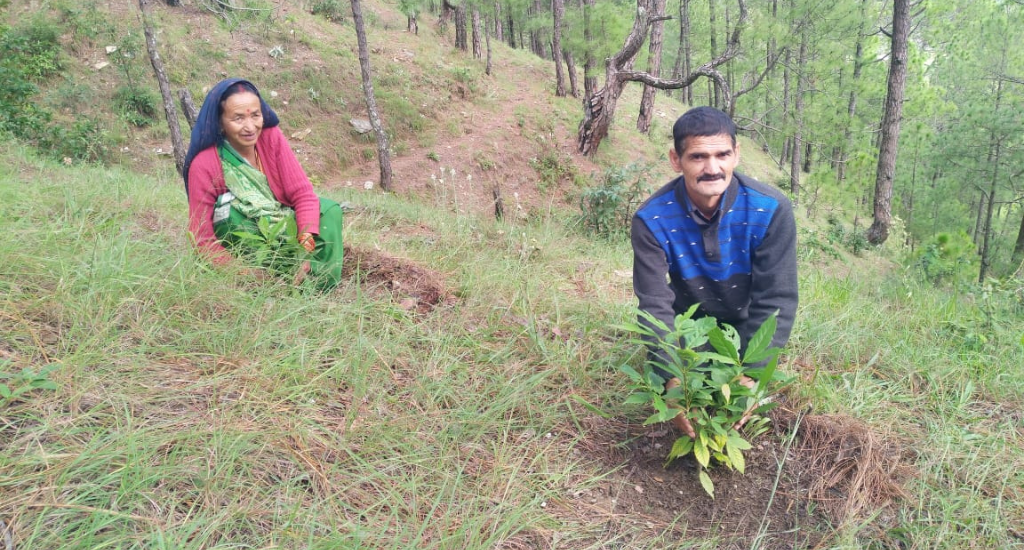
Around a decade ago, conscious efforts to plant banj oak saplings took root as various village and block-level organisations united for a common cause. Government-run nurseries and community-driven initiatives collaborated to distribute thousands of saplings. A tenacious campaign unfolded, marked by the annual planting of 10,000 banj oak saplings. Cutting banj oak trees was prohibited, and vigilant scouts ensured compliance.
Today, the hills bear witness to the success of this endeavour. Woods of banj oak stand tall, breaking the monotony of pine dominance. The silent revolution continues, reminding the villagers that the campaign to preserve and restore their hills must endure.
Also Read: Finding a soul in Uttarakhand’s ghost village
The lead image at the top shows pine needles strewn on the forest floor posing threat of catching fire (Photo by Anurag Tomar)
Anurag Tomar is a former journalist who now lives in a village in the Uttarakhand hills.